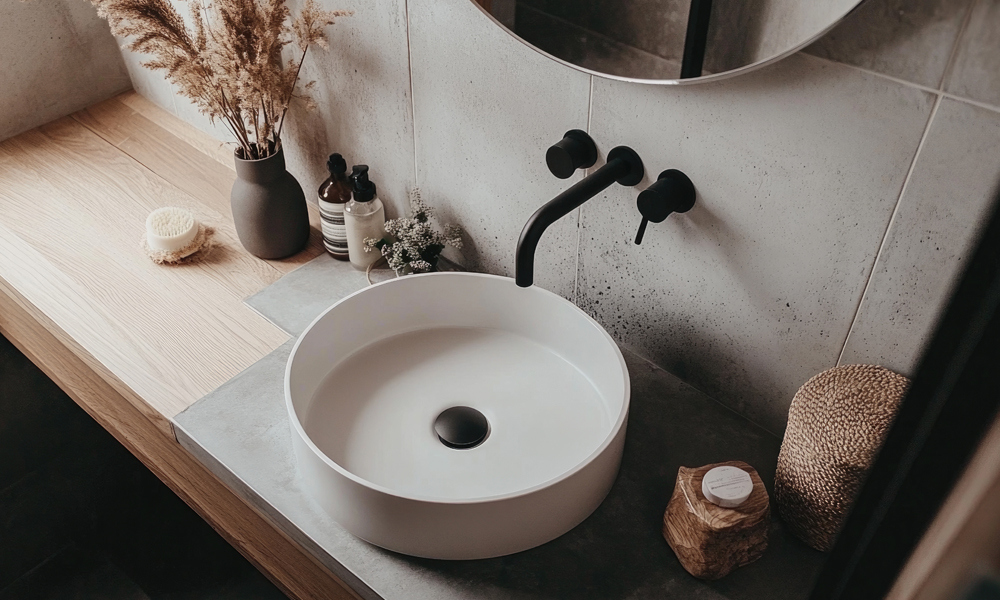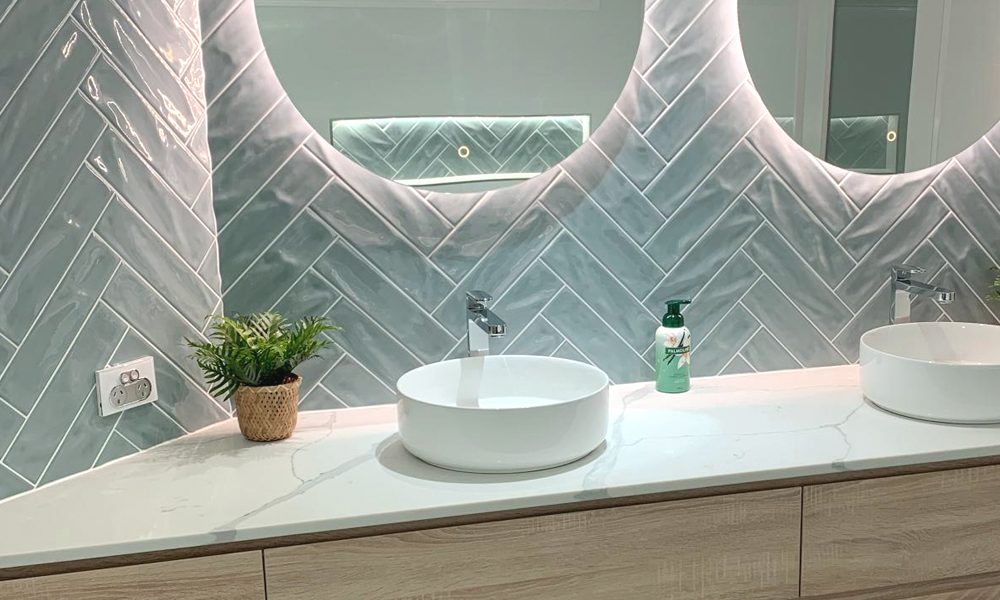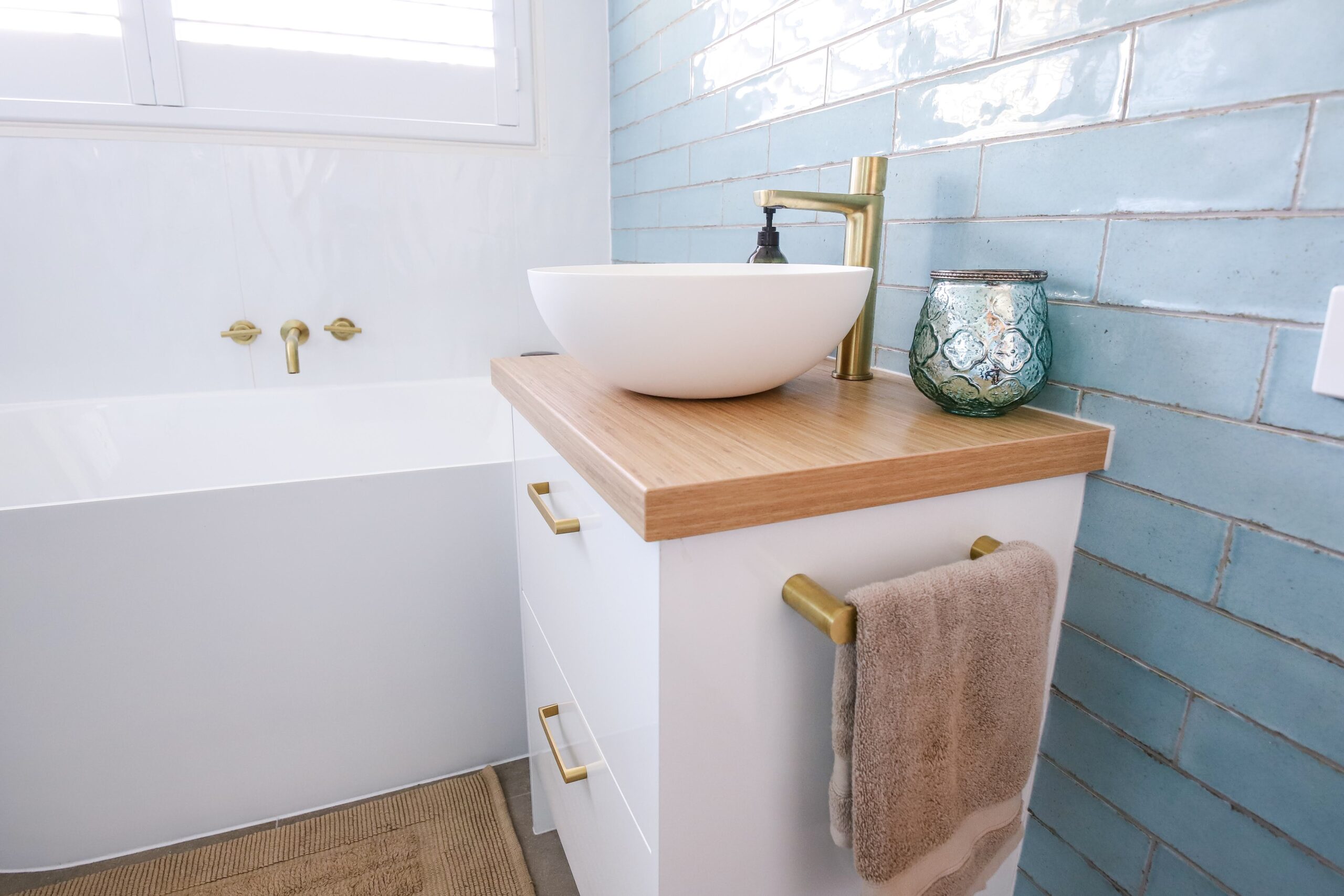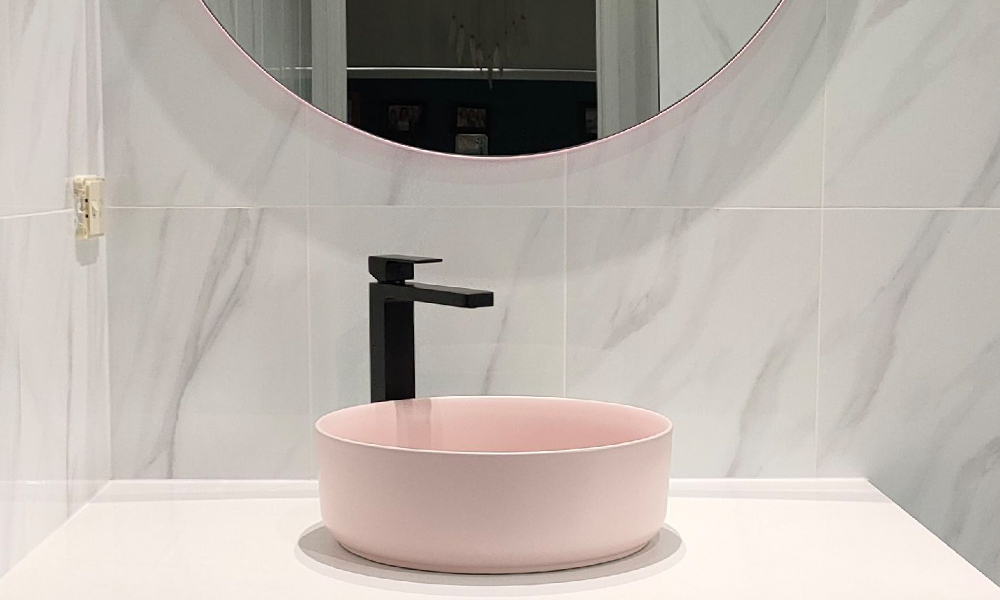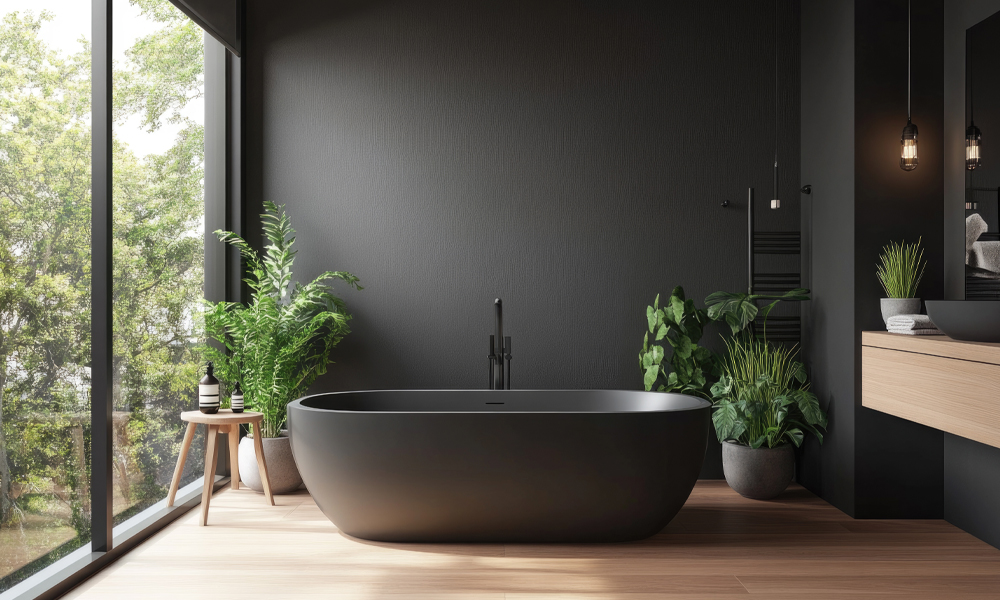
In the case of a bathroom renovation, whether you’re replacing a bathtub or adding a new one, you will need to determine what type of bathtub will best suit your new bathroom. Bathtubs are a large and significant inclusion. Accordingly, an important question to ask is: should the new bathtub finish be matte or glossy? In this article, we examine this question and the major associated considerations. It’s not all about looks – there are implications for functionality as well. Armrock Constructions specialises in bathroom renovations on the Gold Coast QLD – if you’re considering a bathroom renovation, please contact our team. We are here to assist:
Bathtub – Basic Functionality
Bathtubs are designed to retain water, and for people to be able to hop in and out of them. Fair enough? Whether your tub has a matte or gloss finish, you will be able to use and enjoy your tub. However, there are some subtle differences between these two finishes. These include:
a. (Primarily) the look of your bathtub
b. (Secondly) functional aspects of your bathtub
Both of these aspects are important, whether you opt for a gloss or matte bathtub. Not sure whether you’re going to include a bathtub or not? Check out this article: Should a bathroom have a bathtub.
The Different Between Matte & Gloss

Matte and gloss are different finishes. Matte is a less-reflective finish, whereas gloss finishes are shiny and reflective. Here’s a quick review of the main differences:
| Matte | Gloss |
| Minimal Reflection | Highly Reflective |
| Diffuse impression | Shiny |
| Tactile | Smooth |
| Can have more Grip | Can be Slippery |
| Organic | Vintage / Classical |
One isn’t better than the other. Matte and gloss are two different finishes which can be successfully applied to a wide range of bathroom styles. This gives a great scope of possibilities for your Gold Coast renovation project. You can learn more about using matte and gloss in interior design in this article.
Design: Matte Vs Gloss / Design Objectives
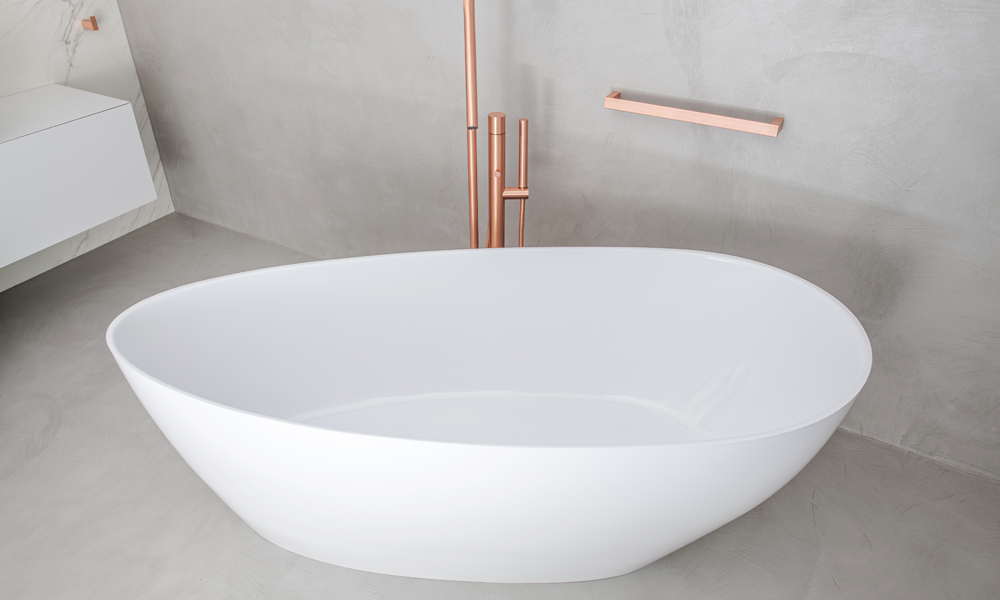
Matte and Gloss can both be applied to a wide range of different bathroom styles. The applications are very versatile – you might use either approach towards a range of different stylistic resolutions; for example, a high-end bathroom renovation design could feature either a matte or a gloss bathtub. This is also true with other types of bathroom styles; e.g. classical, natural, industrial, vintage, or minimalist. The difference is the way the bathtub exists and relates to other bathroom elements. Some of the key ways this can work include:
Design: Lightness and Spaciousness
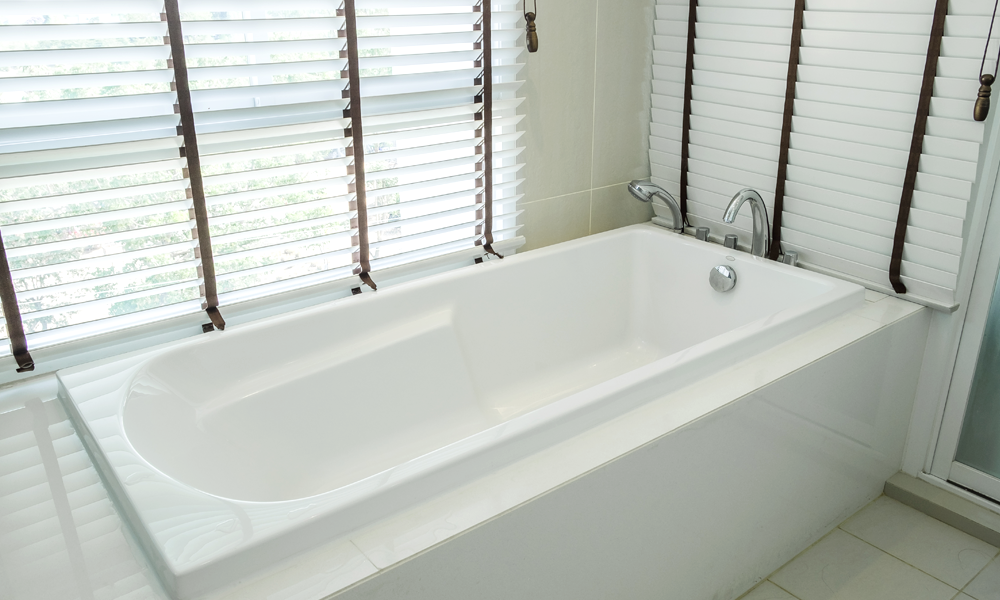
Glossy bathtubs are more reflective, so by virtue of their size, can enhance the light in the room. This can amplifying the sense of spaciousness in the room. Increasing light in this way can help to optimise the use of both natural light and situational lighting. This effect isn’t always desirable, but it’s worth pointing out if you’re looking to achieve that type of outcome.
Design: Reflection & Softness

Matte finishes tend to create a softer effect, while the opposite is true with a gloss finish. This is mainly due to the level of reflectiveness in the finishes. Depending on the look you’re going for, the extent of reflection in the bathroom needs to be taken into account. A ‘natural’ look might enjoy the softness and integration created by a matte tub, whereas an opulent style might go the other way. There are also numerous subtle combinations that can be used to create mid-range effects as well. There are multiple approaches! It’s important to keep in mind that a matte bathtub may well be the solution that gives your bathroom a winning edge.
Design: Immersion with Matte Bathtubs
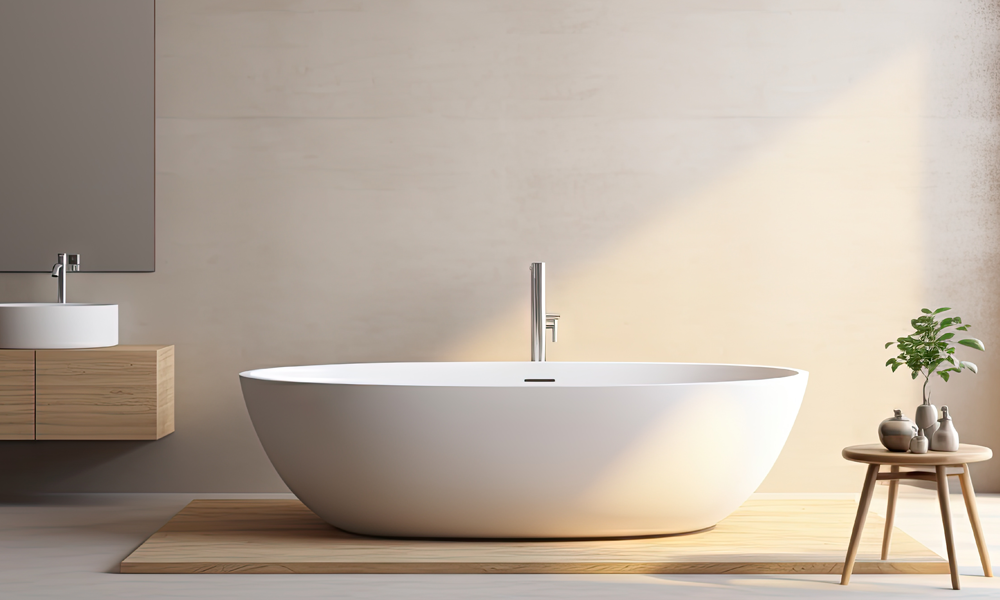
Matte finishes definitely create a more immersive effect – especially when paired with or contrasted with other elements such as the bathroom bench tops. Whereas highly reflective bathrooms move the eye around the room, softer and more diffuse finishes allow the eye to sink into the room. For a space that is a refuge and sanctuary, like a bathroom, this may be a good outcome. However, the bathroom also needs to be viewed in the context of the broader home design; also, the opposite of this immersive quality is the goal of some bathroom styles. In many cases, the middle ground is where the best results may lie.
Historical Design Context
Matte and Gloss are looks that have evolved through a long history of design movements. They have both been ‘on-trend’ at different periods in time. Gloss traditions pre-date matte traditions.. most likely because early in the piece, everything (except for polished stone, glass, etc) was non-glossy – so making things ‘shiny’ equated to a desirable, luxurious look that wasn’t regularly available.
This tradition goes back to the Baroque Period (17th & 18th Century) and the Rococo Style (18th Century), where it was expressed by highly polished, gilded and reflective surfaces. This style has flowed through various design movements to contemporary modern design. Meanwhile, matte styles go back to the late 19th Century, when the Arts & Crafts Movement in Britain began to celebrate the beauty in natural materials. This tradition has also evolved through different design eras (such as industrial design and contemporary minimalism) to bring us to the modern era.
That’s the great thing about modern bathroom design options – we have the best of both worlds, in our ability to access a long history of design evolution, in conjunction with increasingly superior materials, to create the bathrooms of our dreams! Yes!
A Relatively Safe Diversion

A quick note – in bathroom design, ‘less is more’ is often the path to success. Unlike many of the stylistic choices that can be made in bathroom design, the matte / gloss bathtub choice is a relatively safe decision. If you’re opting for a white bathtub (which is the most common convention) it will still be white whether you use a matte or gloss style – in many cases, the distinctions are highly subtle.
Functionality: Scratch Resistance
Gloss finishes may be more resistance to scratches than matte finishes in general, although this may depend on the specific product. Materials have evolved, and continue to evolve. Matte finishes are purpose-made, and should be capable of handling the normal wear and tear that a bathtub might experience.
Functionality: Keeping it Clean
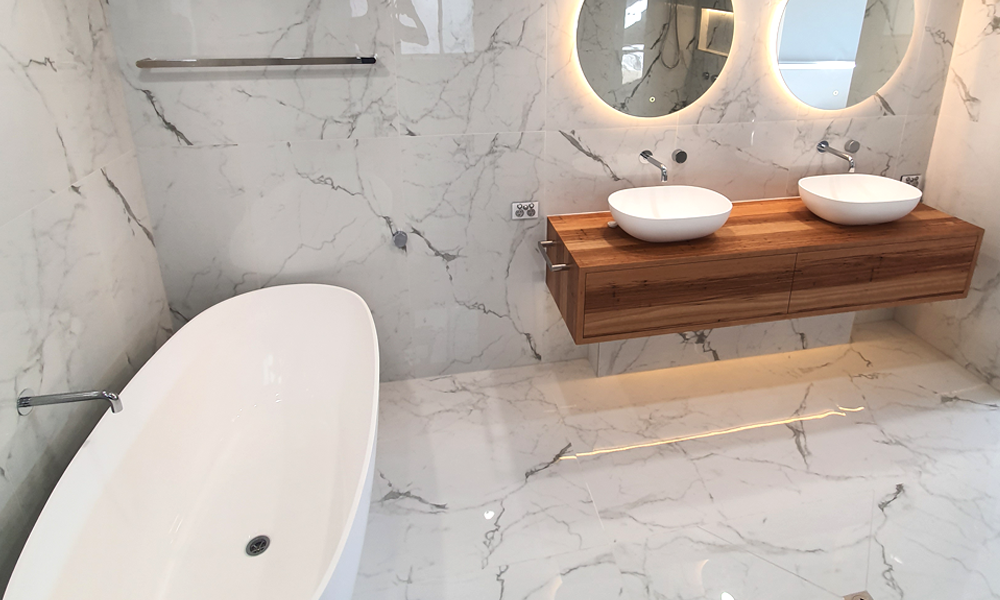
In terms of keeping your bathtub looking nice and clean, there are issues like fingerprints, smudges, dirt and grime to take into account, and the question of which finish is easier to maintain. Both matte and gloss finishes have different pros and cons in this area, and again, this may depend on specific products. Because matte surfaces are non-reflective, they don’t tend to show minor marks as obviously as a reflective gloss finish. Meanwhile, matte surfaces may retain stains easier than gloss surfaces (if they’re not attended to quickly, or if the incorrect cleaning products are used). This is generally because gloss surfaces are harder.
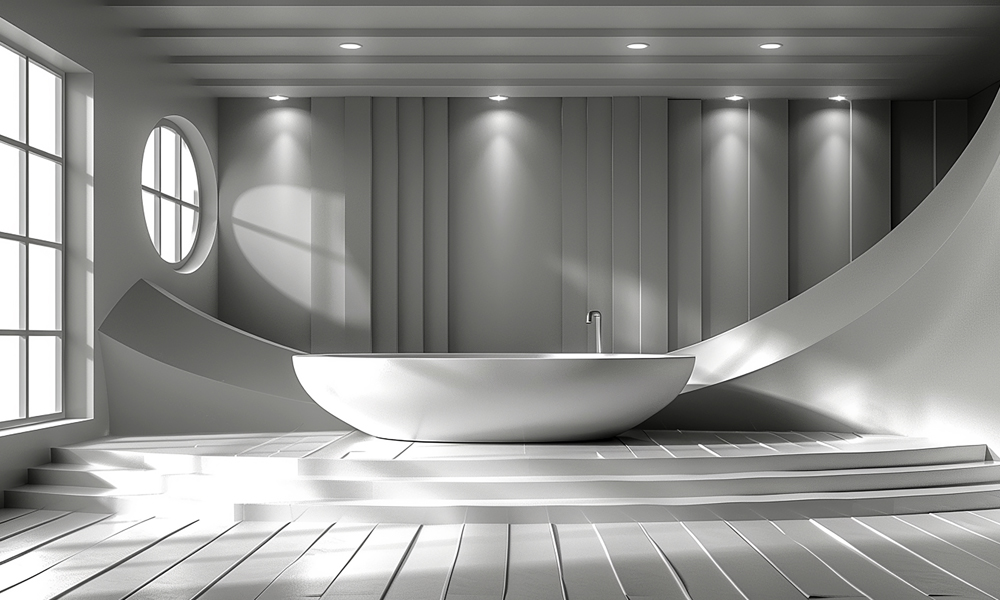
Functionality: Safety
While both matte and gloss finishes go towards the creation of a functional bathtub, matte finishes may (depending on the product) offer a somewhat safer solution due to the texture of the surface being less slippery. However, since bathtubs have been made with gloss finishes for centuries, it’s interesting to note that the advent of switching to textured materials for bathtubs hasn’t arisen as an essential requirement. Getting in and out of bathtubs can be tricky, especially for more elderly people, so inclusions such as safety hand rails may be a more relevant solution, at the discretion of the homeowner.
Functionality: Scratch Resistance

Gloss finishes may be more resistance to scratches than matte finishes in general, although this may depend on the specific product. Materials have evolved, and continue to evolve. Matte finishes are purpose-made so they should be capable of handling the normal wear and tear that a bathtub might experience in normal usage.
Conclusion: The Way Forward
Matte and gloss are two different approaches to bathtubs that have stylistic and functional implications. Assuming normal usage, the stylistic aspects are the most important. The bathtub is a significant visual element and makes a large contribution to the look and feel of the bathroom. Understanding the type of bathroom you wish to create, and then including the necessary elements, is something of an art form. We can help. Our team are experienced bathroom renovators and can work with you to design and implement exactly what you’re looking for. Simply contact us for a free consultation and quote to get started:

